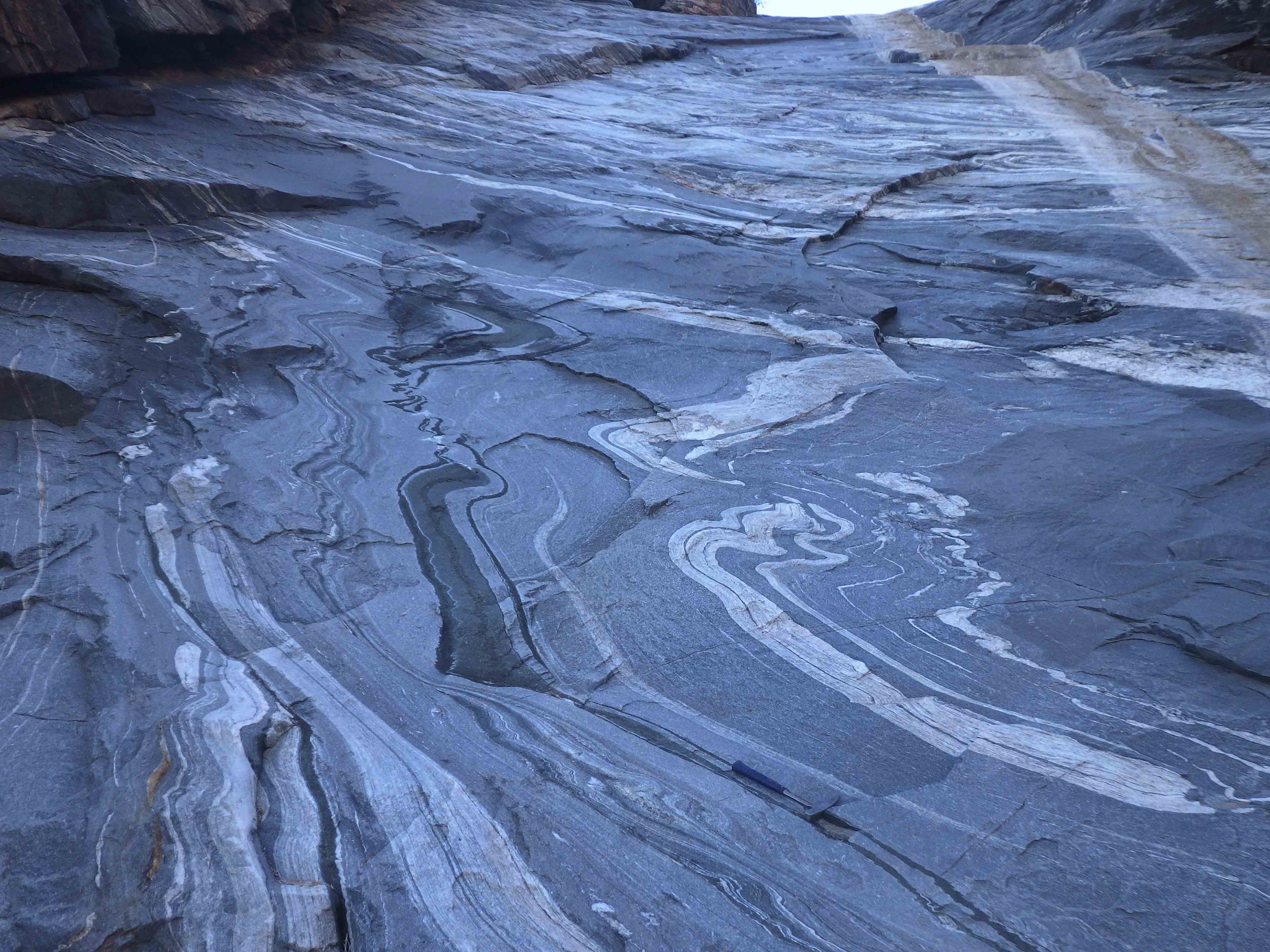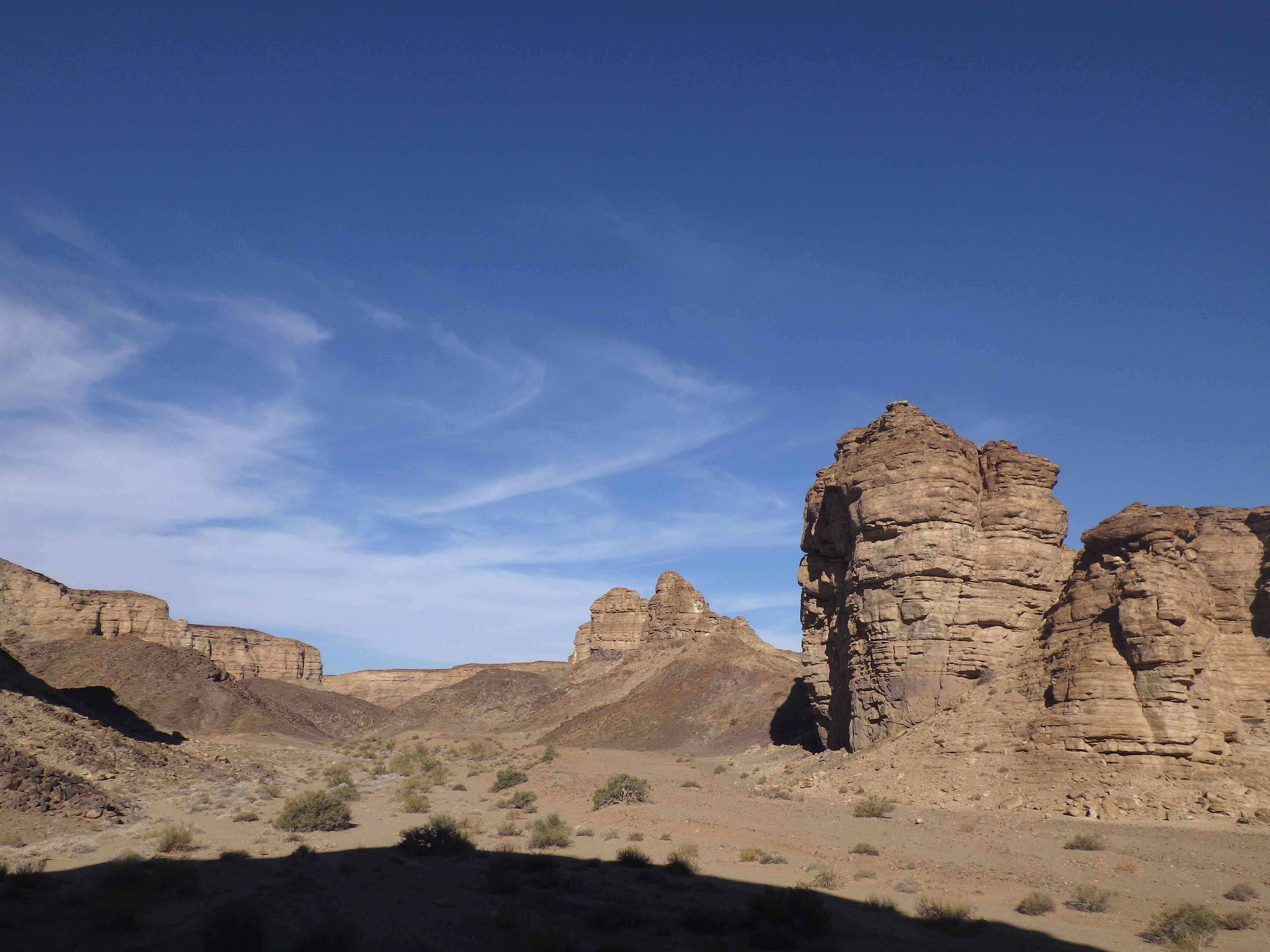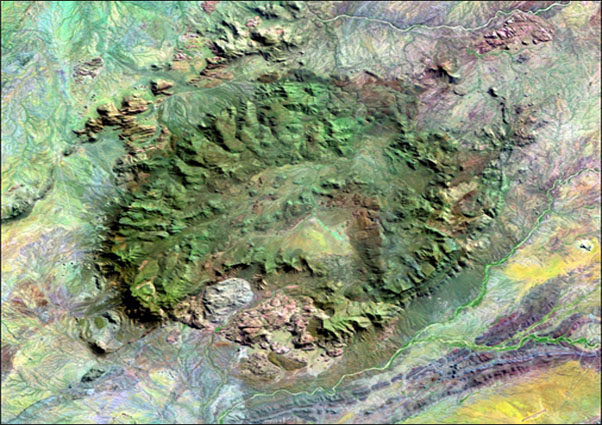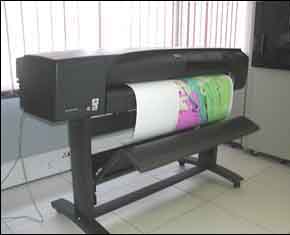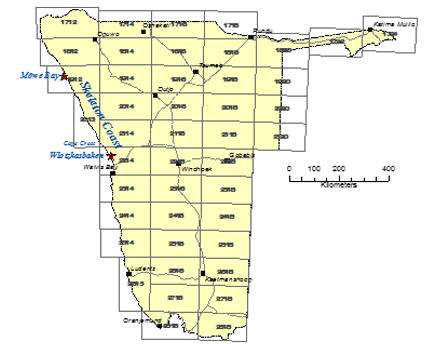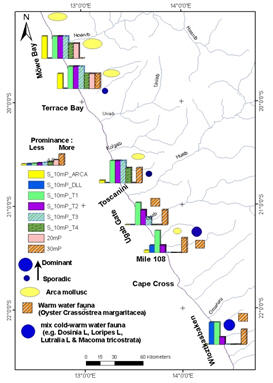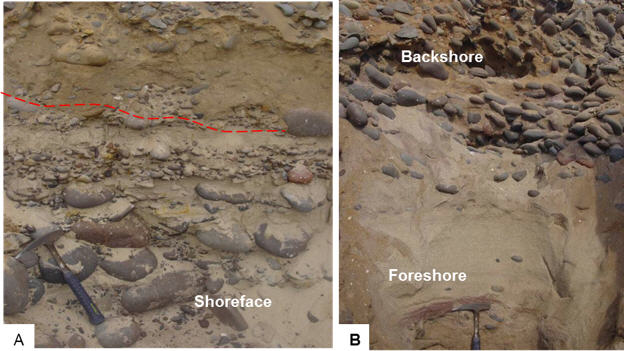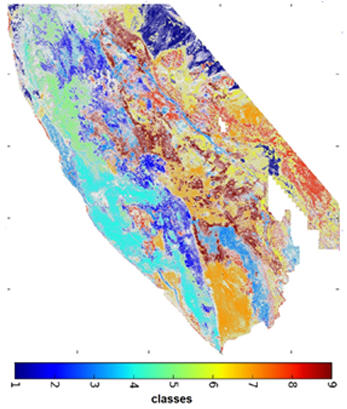The Regional Geoscience Division conduct geological mapping and produce geological map data. Our GIS data are available both in digital and hardcopy format.
Details of available maps and digital data are given in the downloadable catalogue.
Tectonics
The Tectonic Subdivision deals with the stratigraphy and structural-metamorphic aspects of the oldest rocks found in Namibia, i.e. the Palaeo - to Neoproterozoic orogenic belts. A simplified tectonostratigraphic map showing the major tectonic and stratigraphic domains of the country is available and can be downloaded here.
Mapping & Research Activities
- High resolution mapping of 1:50 000 geological maps
Over the past five years, we focused on improving the geology of Southern Namibia in the Namaqua Metamorphic province and the Gariep belt. The mapping is carried out as a joint collaboration between the Department of Geological Survey of Namibia and the Council for Geoscience (CGS) of South Africa. Over sixty geological maps are produced; these were supported by modern remote sensing data (ASTER, Hyperspectral, Sentinal-2, Google Earth, and geophysical data). Other mapping projects are on the Huab Metamorphic Complex, Khoabendus Group & Fransfontein Granite Suite. A good coverage of field studies is compiled into a series of map explanation reports detailing new petrographic, geochemical and geochronological results. The research aspect of these projects has been a subject for a number of Universities Hons, MSc, PhD and journal papers.
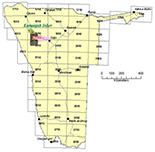
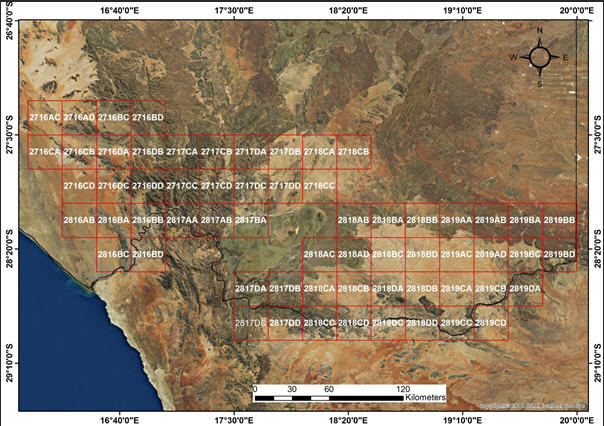
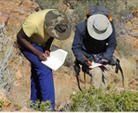
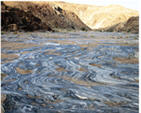
Stratigraphy
The Stratigraphy Subdivision deals with the stratigraphy, sedimentology and palaeontology of the younger Palaeozoic to Cenozoic sedimentary basins, including offshore basins.
Current mapping/Research activities
- Mapping of Quaternary to Recent surficial sediments or regolith mapping in north eastern Namibia.
Regolith is a general term for "the layer or mantle of fragmental and unconsolidated rock material, whether residual or transported and or highly varied character, that nearly the everywhere forms the surface of the land and overlies bedrock". It includes debris of all kinds, volcanic ash, glacial drift, alluvium, loess and Aeolian deposits, vegetal accumulations, and soil.The project aims to map previously undifferentiated or poorly differentiated Quaternary or younger surficial sediments in the study area using remote sensing techniques in tandem with field and geochemical data for validation.
The economic significance of this project includes the identification of possible:
- Uranium mineralization
- Gypsum
- Water resources
Land use applications include:
- Urban planning and expansion
- Agriculture
- Forestry
Environmental Applications include:
- Land degradation e.g. soil erosion, acidity, and salinity
- Ground water modelling e.g. to locate and qualify and quantify
- Biodiversity programs
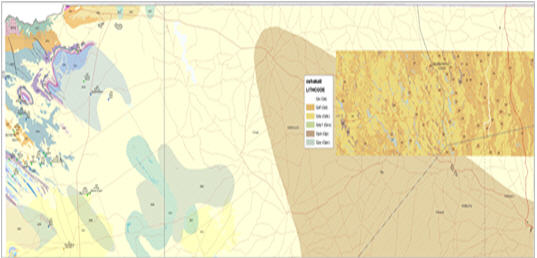
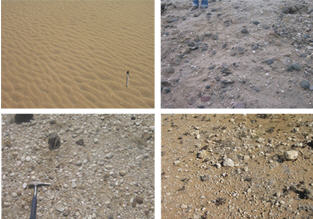
- Mapping project of Quaternary to Recent surficial sediments of the Oshakati sheet
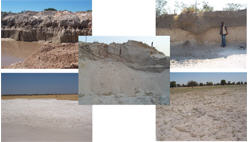
Typical sediments
A combination of using remotely sensed features such as patterns, and colours; as well as discriminating of the sediments along the elemental composition derived from aerial photographs and satellite imagery to determine polygon boundaries. This is followed by groundtruthing and collection of representative samples which are analysed in order to determine how well the processed images correlate with the reality on the ground; with the intention of understanding the relationship between the remotely sensed attributes and the regolith.
The collected samples were analysed using XRF and XRD. The XRF results revealed in agreement with the literature reviews the fact that silica is most abundant comprising on average 45% of the samples. However, in the clay rich samples, it only makes up on average 40% and has high aluminium and iron content.
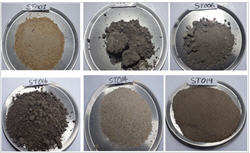 Representative samples for material types
Cenozoic fluvial and marine terraces of the Skeleton Coast
Representative samples for material types
Cenozoic fluvial and marine terraces of the Skeleton Coast
This involves the detailed mapping of the fluvial and marine terraces along the Skeleton Coast between Wlotzkasbaken and Mowe Bay. The aim of the study is to understand the various Neogene terrace levels along this part of the Namibian coast, to ascertain their economic potential.
The investigation entailed the Sedimentology, heavy mineral assemblage, and palaeontological studies, supported by microprobe analyses of garnet, ilmenite and magnetite. Most of the marine terraces along this part of the coast consist of beach environments (shoreface, foreshore and backshore) lithofacies where diamonds are little or unlikely to accumulate. The photos below illustrate favourable and less favourable beach environments for the concentration of diamonds.
Distribution of onshore marine terraces and mollusc fauna in the coastal area between Wlotzkasbaken and Mowe Bay.
S-10mP= Sub-10m marine Package
30mP = 30m package.
Examples of beach environments mapped in the raised marine terraces between Wlotzkasbaken and Mowe Bay -A) Shoreface/subtidal gravel lithofacies with a higher pontential for diamonds, B) Foreshore/intertidal sandy lithofacies with or no dimaond pontetnial.
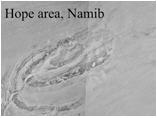
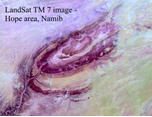
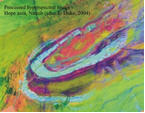
GIS & Remote Sensing
The GIS & Remote Sensing Subdivision's task is to capture and compile field data acquired by Geological Survey staff or obtained from outside agencies. This includes maintenance of geological map database, as well as the analysis of digital geological data for the production of thematic maps and reports. The subdivision also deals with remote sensing in geological mapping through utilization of aerial photographs, orthophotos, satellite images and hyperspectral data, which pose as useful tools especially in arid regions, with little or no vegetation cover.
Satellite Imagery
ASTER and Landsat
Processed ASTER (Spaceborne Thermal Emission and Reflection Radiometer) data are available at the Geological Survey. The Survey has several ASTER datasets including ASTL1B, AST3A1 and ASTER DEM data. Currently, combined the ASTER prove ca. 95% coverage of the country. Additional information on how to obtain ASTER data is available at Earth Remote Sensing Data Analysis Centre ERSDAC.
Multispectral satellite images (Landsat and ASTER) with a pixel resolution ranging from 15m for ASTER and 30m for Landsat are available at the Geological Survey. Processed images are stored in the Earth Data Namibia database and can be viewed on public computer terminals in the National Earth Science and Energy Information Centre. All the Landsat images can be freely obtained from the Earth Resources observation and Science Center (EROS) USGS USGS and other sites.
To facilitate easy access to the mass digital spatial data, a provisional Spatial Data and Metadata module has been implemented in Earth Data Namibia (EDN). The spatial database can also be accessed in the web-based Earth Data Namibia.
Current Mapping & Research Activities
The GIS & Remote Sensing Sub-Division collaborates in many projects within GSN. The remote sensing and GIS interpretation products are used for field preparation desktop studies and to improve/update existing geological maps. Some of the recent projects include:
- Mineral mapping in Tsongoari area
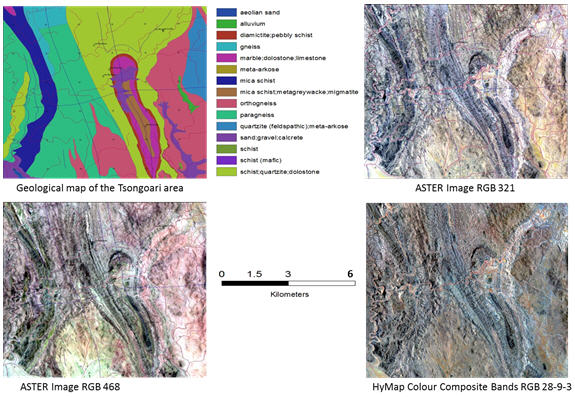 Geological map of the Tsongoari area associated ASTER and HyMap images
Geological map of the Tsongoari area associated ASTER and HyMap images
- GSN_JOGMEC - Alteration mineral mapping using HyMap data in Southern Namibia
- Mapping project of Quaternary to Recent surficial sediments of the Oshakati sheet
- Mapping project of Quaternary to Recent surficial sediments of the Central Namib Uranium District
- Geological-Geophysical Karas Region Interpretation Project
Pseudo-Value Added Lithological Map of the Gariep Belt, produced using a cluster analysis technique. The technique integrates various datasets such as radiometrics, Landsat, magnetics, gravity to produce a classified lithological map.
Cartography
The Cartography division primary task is to visualize the spatial information within GSN. The spectrum of its activities includes all areas of cartography such as production, review and updating of the national geological cartographic data and information illustrations for publications as well as large maps, small-scale maps, topographic maps and of course thematic maps. The map production process consists of editorial work, developing suitable forms of presentation and the actual production of maps on the computer. Data from GIS systems can be processed and graphically displayed for publications.
- Vectorisation (or digitizing) and compilation of maps
- Periodically updating the national maps in analogue and digital form
- Georeferencing maps and spatial data projection
- Production of customised maps and providing cartographic services to respective clients
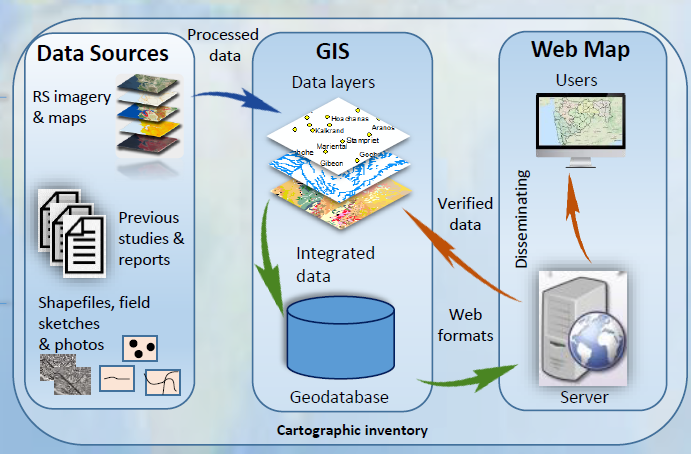
MAP REQUEST
1. Geological Maps
Geological maps provide information on the geological composition at scales of between 1:25,000 and 1:1000, 000.
To request for maps please do contact Geodata Management.
click here
1.1 Ordering and delivery
Delivery is normally within three working days but may take longer if large numbers of orders are being processed at the same time. The produced maps are held on our server for five days, after which they are discarded to save storage space.
1.2 Collecting orders
Once payment for the map orders has been made (this should be done in consultation with the sales department). The clients can then proceed to our office (GSN cartography/ Drawing Office) to present their receipt of payment and have their maps printed out for them.
Alternatively, the produced maps can also be sent via e-mail to the respective clients, upon request.
1.3 Map pricing
Price categories according to amount of detail and data reliability
View map price:
click here

